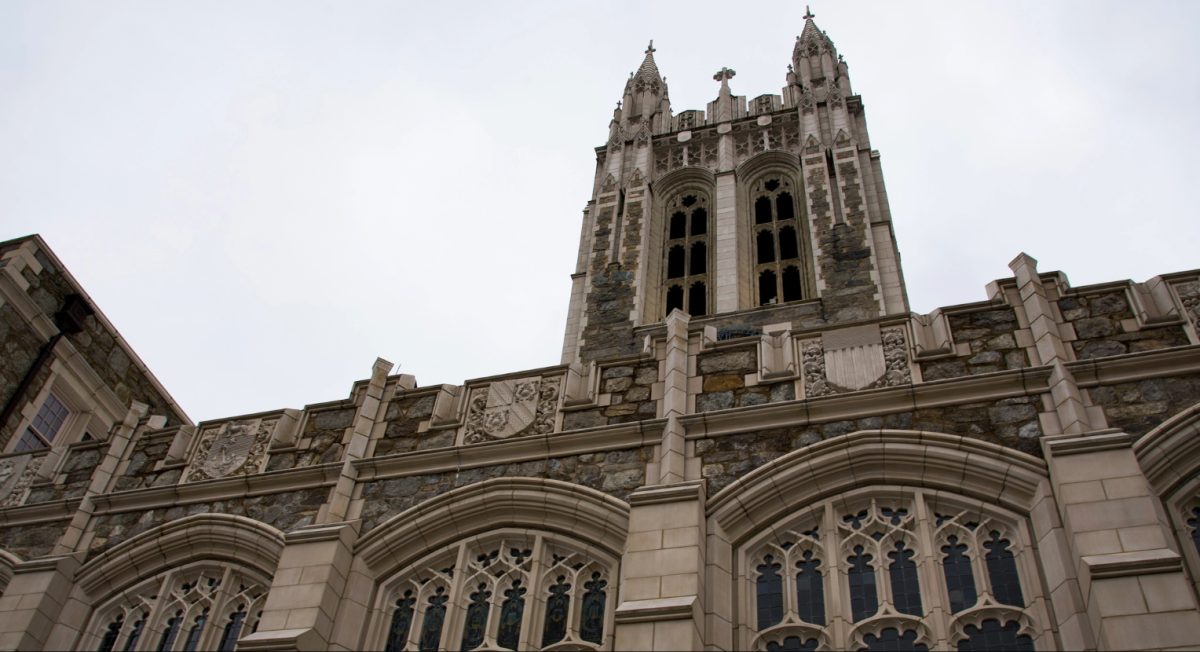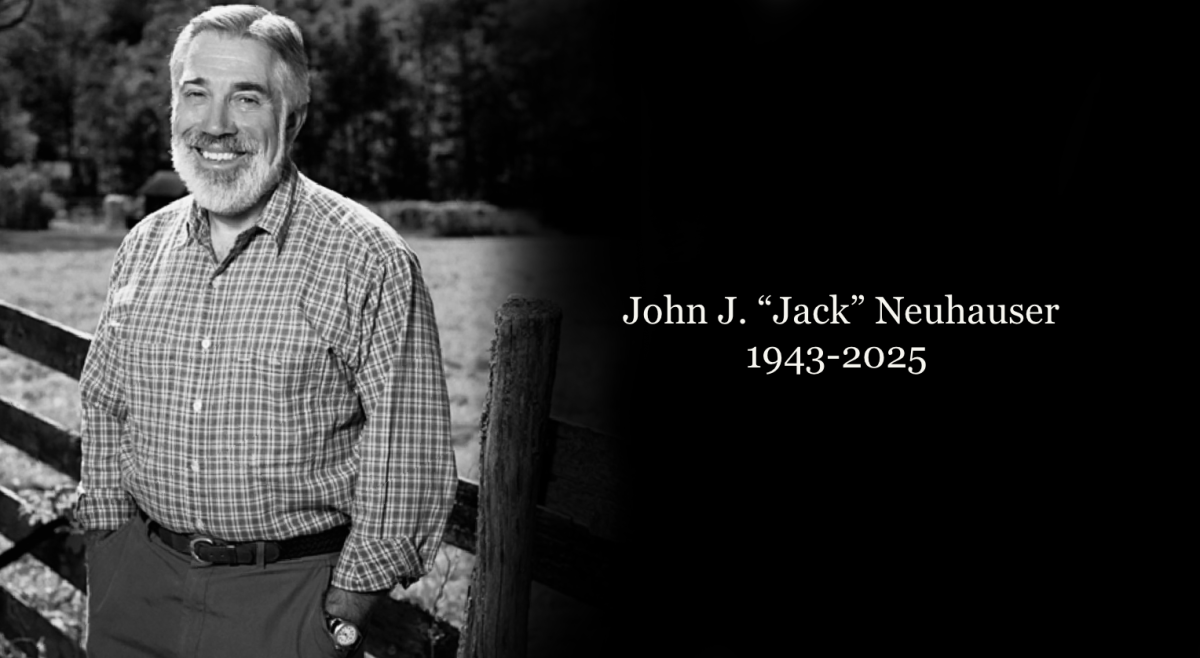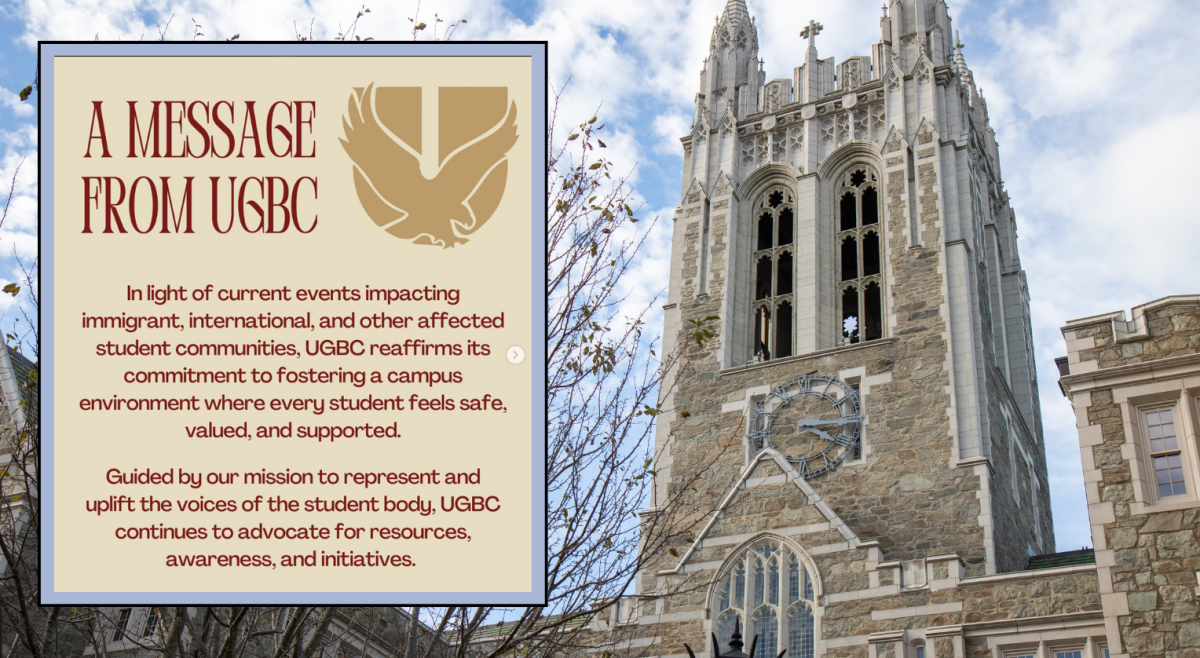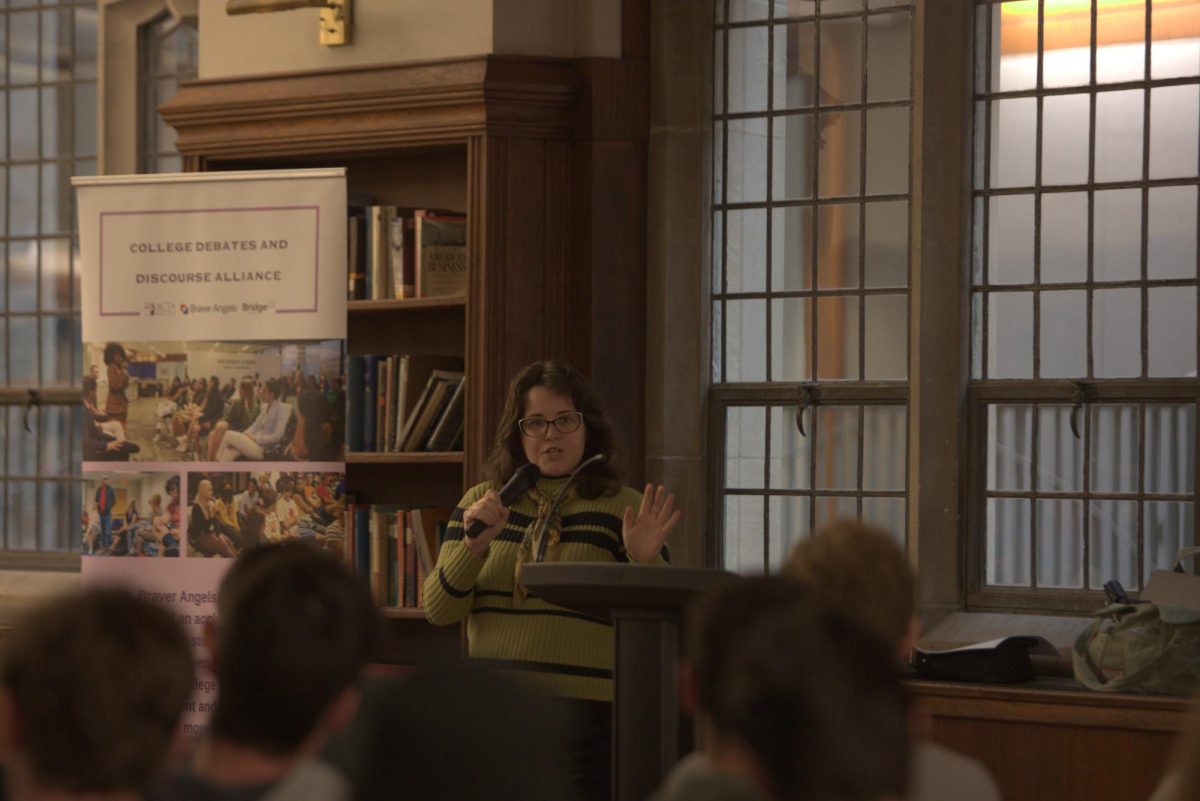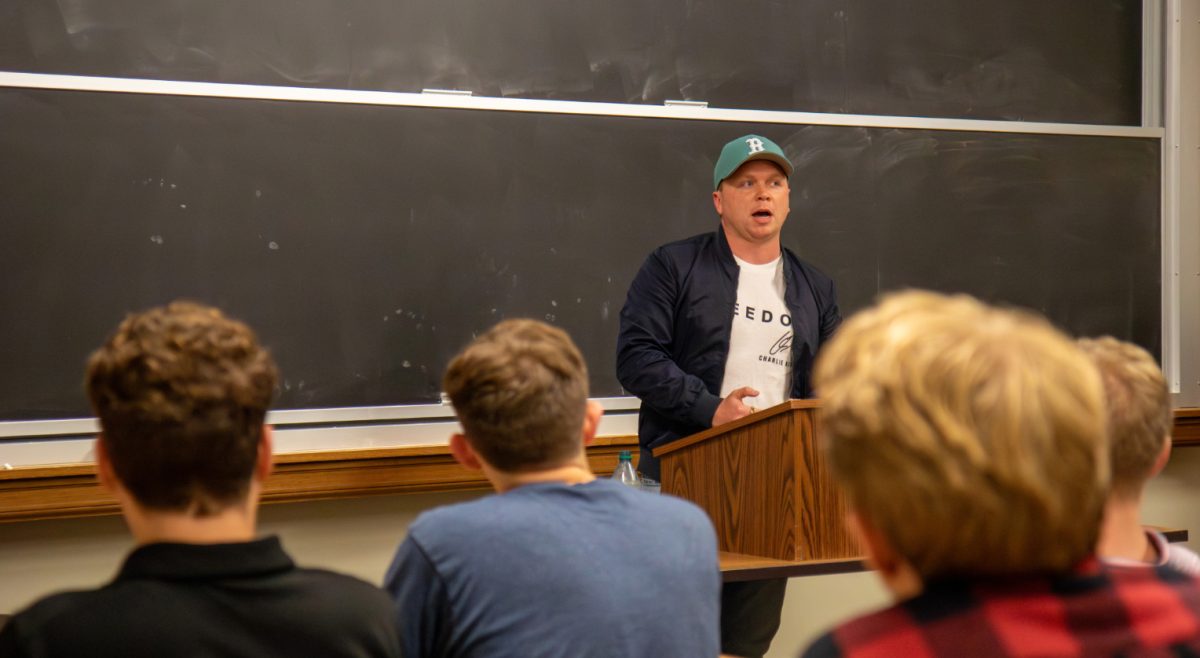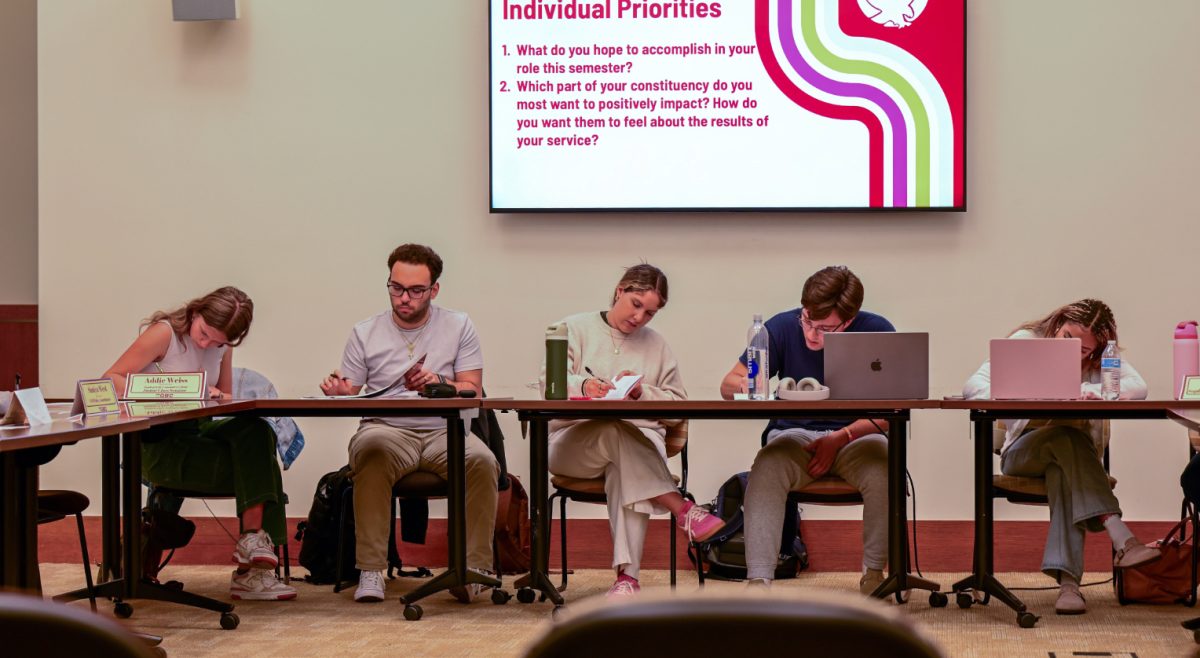Sometimes, students in Alexander Ludwig’s popular music course have silent discussions. No, they’re not reading each other’s minds, or passing notes to each other. The room may be quiet, but students’ voices are still being heard—on Twitter, that is.
“In a class of 100 students, it’s hard to have a discussion, so Twitter helps get all those voices out there at the same time,” Ludwig said. A professor in the music department, Ludwig teaches a course called the History of Popular Music, which focuses on the development of popular music from the 1880s up until Madonna, in order to provide context for today’s pop songs. “Music history” and “social media” may not seem synonymous, but Ludwig has taken the initiative to use Twitter as a tool for learning and engaging both inside and outside of the classroom.
Using Twitter and other online platforms within an academic setting may seem counterproductive: since social media is often considered a “distraction”—why would professors want to integrate it into the teaching process?
At Boston College, however, Twitter has the potential to be more than just a game. When combined with a structured, academic plan, it can open channels of learning that may not be possible otherwise—especially for large lecture classes, Ludwig noted.
Ludwig’s students listen to songs every day and tweet their thoughts about each track—either something unique, or something that stands out to them. The tweet is followed by the course hashtag, #bcpop, which allows students to view their classmates’ thoughts in a single, cohesive stream. One day, students might be tweeting their own blues lyrics, and the next, they are looking at political themes in Bob Marley songs.
The nightly assignments are simple: students need one tweet per song and one interaction, which could mean a retweet or a comment. The process builds community in a 100-student classroom, but also enhances student performance.
“Once [students] start listening and thinking about these pieces and writing it down, it really helps anchor those pieces in their brains,” Ludwig said. “When you have this Twitter journal that’s much more public, you concentrate more on what you’re tweeting, and you concentrate more on what you’re listening to.”
Ludwig gives his students several quizzes throughout the semester, which involve identifying songs and their characteristics. Cal Liu, one of Ludwig’s students and CSOM ’18, noted how the Twitter assignments not only help prepare him for quizzes, but also convey ideas.
“In Twitter you have a word limit, so you have to convey the characteristics of the songs precisely and be as brief as possible,” Liu said. “After a while, you can capture what this song’s really about, and later when you review the song, you can recognize it easier.” And while Twitter reduces the workload—when compared to reading responses or Canvas posts—it also reduces the pressure, he explained, which allows for more casual, yet still meaningful dialogue.
Twitter is not just reforming discussions—it provides alternative ways to participate, and it broadens the scope of participation beyond the hand-raise in class. For quiet students who dread the “participation grade” tacked onto the end of the syllabus, Twitter can allow them to voice their opinions in a more comfortable setting—such as Ludwig’s Twitter discussions. And for students who want additional learning outside of the classroom, Twitter can continue the conversation after the bell rings, so to speak.
Lindsay Hogan and Matthew Sienkiewicz of the communication department engage their students outside of classroom hours with Twitter challenges by tweeting questions to the class, challenging students to reach out to a professional in a certain media field, and asking them questions. The first students to respond may receive a prize or bonus points, which may seem “gimmicky,” according to Sienkiewicz, but the rewards can extend beyond these day-to-day challenges.
In an ordinary classroom setting, it may seem farfetched for a student in Boston to reach out to a director in Nigeria, or a journalist working in Beijing. For Sienkiewicz’s students, however, this is not only possible, but also encouraged as part of his Globalization and the Media course, which allows students to interact with media producers around the world. A cold email from a BC student to one of these producers, Sienkiewicz explained, is unlikely to receive a good response—but Twitter breaks down these communication barriers.
“Interacting through Twitter often allows these social statuses to get blurred,” he said. Users should be mindful about whom they choose to follow, however. “What I find is that the accounts that people follow are mostly at the extremes. They follow Kim Kardashian and their sister,” he said. Instead, Sienkiewicz suggests finding the “in-between”: someone who has more experience, but not so much that he or she won’t bother with students’ questions.
“So, if you’re interested in international relations, don’t tweet to John Kerry, and don’t tweet to the Washington Post International Affairs, but tweet to somebody writing for the Boston Globe about international affairs, and you’ll very often get a response.”
Hogan, for her Children and Media course, also asks students to reach out to producers, writers, and casting agents in the media industry. She incorporated Twitter challenges into her Social Media course, which was offered for the first time this past summer.
“One thing I love about using social media in the classroom is that it really does create a two-way learning environment,” she said. Hogan gains even more knowledge about the platforms from her students, who were asked to keep social media diaries this summer.
The two-way learning also extends to BC alumni and graduate students, who are most actively engaged on Twitter, Facebook, and Instagram, according to Melissa Beecher, the University social media manager. Undergraduates aren’t the only ones who can follow course hashtags—alumni can contribute to the online conversation, as well.
“A nice benefit to having a known hashtag —such as [John] Gallaugher’s #BCTechTrek—is that alumni or others can follow it and weigh in on topics,” Beecher said in an email. “Alumni who have launched startups can talk about that experience with current students interested in entrepreneurship.”
Watching professors utilize social media for academic purposes is encouraging in and of itself, according to Kwani Lunis, a former student of Sienkiewicz and A&S ’15.
“He made an example of himself,” she said. “The fact that a professor is using [Twitter] as a resource to gain knowledge—why not do it yourself?” Plus, Lunis—who initially felt like a “cyber-creep” for tweeting at strangers—is now able to use Twitter as a networking tool, and she reaches out to professionals in her career areas of interest.
“When you sign up for Twitter, or Facebook, or any other social media outlet, you don’t really realize the power of it and how it has multiple uses,” said Ellen Burr, another student of Sienkiewicz and A&S ’15. Burr, an international studies major with a concentration in media cultural studies, also noted how using Twitter academically can be beneficial in the future.
“I’m looking to get into sports broadcasting, and the trajectory of the media landscape right now is more toward social media and the Internet, and away from traditional forms like television, print, and radio,” she said. “I think my skills and experiences I have gained in these classes will definitely help in that regard.”
Twitter has been commended by many professors for its ease of use—it avoids the hassle of logging into a separate website, and most students already have Twitter on their phones. It’s fast, and it encompasses a broader ranger of users than Facebook, which is not as valuable for education purposes, Sienkiewicz explained. While Facebook friends are usually your “real-life” friends, Twitter followers can be virtual strangers—strangers who can soon become professional contacts who offer advice and answer questions. Social media has the potential to be used for various purposes, but the question still remains: does it belong in every classroom?
“I think there are always ways—no matter what you’re teaching—to encourage engagement, and to extend that learning outside of the classroom,” Hogan said. “At the same time, I understand that there can be challenges. Any time you’re using any sort of technology for teaching, you have to start out with a purpose. You have to have a learning objective.”
Patricia Delaney, the deputy director of the Office of News and Public Affairs, noted how using social media is not one size fits all.
“Social media is a great addition to the toolbox available to faculty, but as with all tools, it has to be the right fit,” she said in an email. “If it truly adds value to the course experience, then social media is a wonderful option, but if it doesn’t suit the course structure or the material being addressed, it could add a layer of effort that in the long run proves more time-consuming than helpful.”
And it’s not just time-consuming for first-time users: even for social media experts, joining the Twitter-sphere along with students requires extra work.
Hogan, for example, makes herself available for questions at any time on Twitter—and, while this gives students the opportunity to ask last-minute exam questions, it also makes teaching an around-the-clock job. Hogan also has reservations about being overactive on Twitter, emphasizing that professors should be wary of cutting into students’ leisure time.
With the right balance, however, students tend to be on board—and even excited about using social media alongside their coursework. And, while professors may be teaching with Twitter, they’re also teaching how to tweet—in 140 characters or fewer.

